Sandbar Birds
Birding along Guyana's Issequibo and Rupununi Rivers is wonderful, heavenly. As it twists and turns, you never know what might be around the next bend. A family of giant otters or a little klatsch of large-billed terns? A cocoi heron or an Amazon kingfisher? From a boat, you can get close without alarming the birds.
Here are some of my favorite ringed kingfisher photos from the trip. Some were taken on the Rupununi, some on the Issequibo.
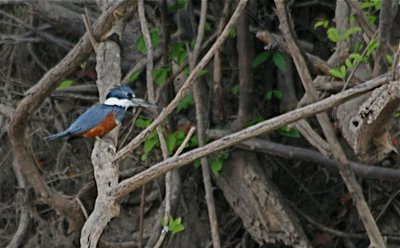 I like the composition of this one.
I like the composition of this one.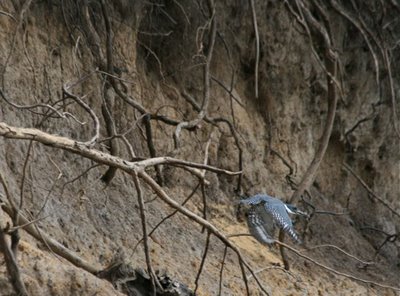 Beautiful wings and a harsh call as it takes off.
Beautiful wings and a harsh call as it takes off.Ringed kingfishers are much more approachable than belted kingfishers.
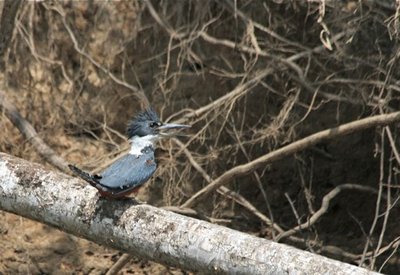 Maybe it's because they're the King Kongfisher, easily twice the belted's size.
Maybe it's because they're the King Kongfisher, easily twice the belted's size.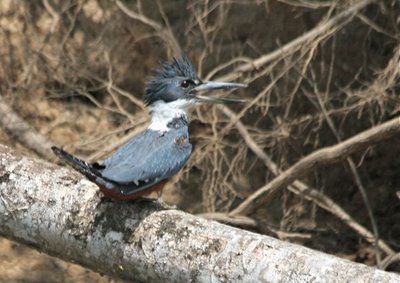 Grand feisty birds they are.
Grand feisty birds they are.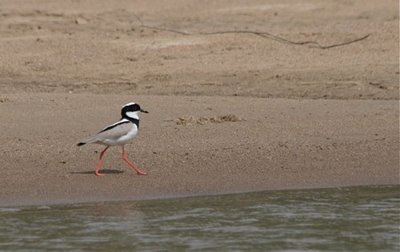
These little pied lapwings Vanellus cayanus reminded me vividly of the piping plovers I studied and protected for three years in Connecticut back in the 1980's. They were so smart, military in their markings and bearings, and always escorting us along the sandbars (probably under the impression they were leading us away from their eggs or chicks).
 A head-on shot, showing how the black breast band seems to expand when the bird stretches its neck. Could there be any better graphic pattern for catching the attention of another pied lapwing across a wide river? Hey! You!
A head-on shot, showing how the black breast band seems to expand when the bird stretches its neck. Could there be any better graphic pattern for catching the attention of another pied lapwing across a wide river? Hey! You!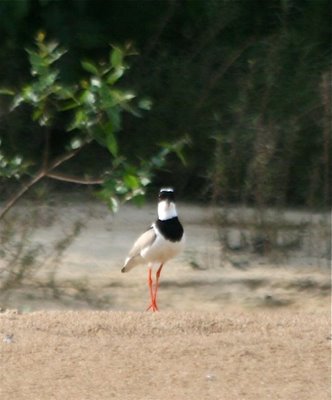 I was delighted to find black skimmers Rhynchops nigra abundant in one section of the river, and went into photo overdrive as they beat their black wings all around us.
I was delighted to find black skimmers Rhynchops nigra abundant in one section of the river, and went into photo overdrive as they beat their black wings all around us.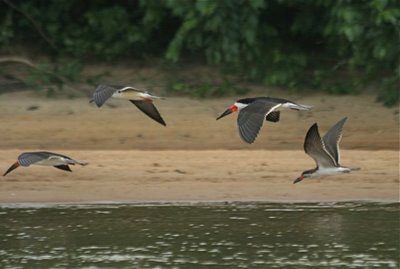 This is the same species we see in North America, but it's resident here in Guyana. The bird at lower right is a juvenile, as you can tell from its nearly normal-looking bill. As the birds age, their thin, bladelike lower mandibles get longer and longer. They use the mandible to slice the water in a long, low pass, and grab up any small fish they encounter with a dizzyingly fast snap of the bill. Fish will actually rise to the track the skimmer makes in the water's surface, thinking it's made by a swimming insect, perhaps?
This is the same species we see in North America, but it's resident here in Guyana. The bird at lower right is a juvenile, as you can tell from its nearly normal-looking bill. As the birds age, their thin, bladelike lower mandibles get longer and longer. They use the mandible to slice the water in a long, low pass, and grab up any small fish they encounter with a dizzyingly fast snap of the bill. Fish will actually rise to the track the skimmer makes in the water's surface, thinking it's made by a swimming insect, perhaps?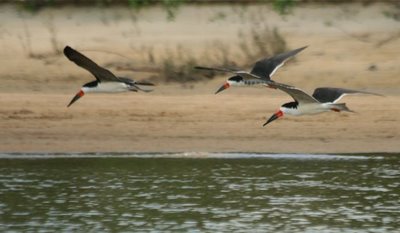
Skimmers on high alert, about to take wing.
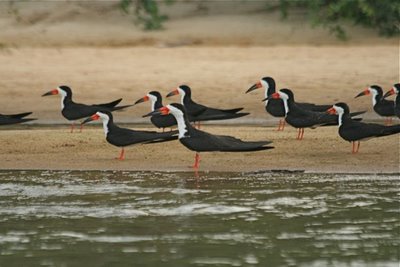
You can almost never make out their eyes, but that's part of their unique appeal. I'm sure this color pattern, like the black marks football players put under their eyes, reduces glare as they work the bright waters.
I was beside myself when we came upon some large-billed terns Phaetusa simplex. I remembered them so fondly from my time along the Rio Tapajos in Brazil. Noisy, even raucous, the terns, which nested in large colonies on river sandbars with black skimmers, yammered all night long, as if they were having a never-ending party.
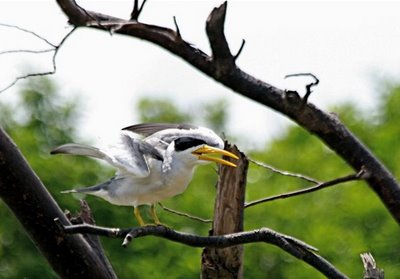
To me, there's something quite skimmerlike about the large-billed tern's proportions and GISS.
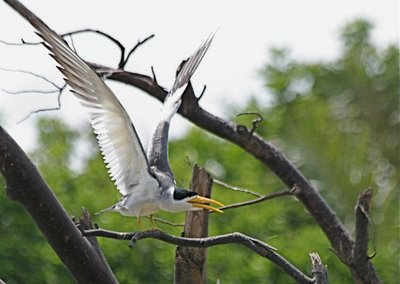
It's kind of like a skimmer in tern's clothing, though it makes its living more like a tern, plunge-diving instead of skimming.
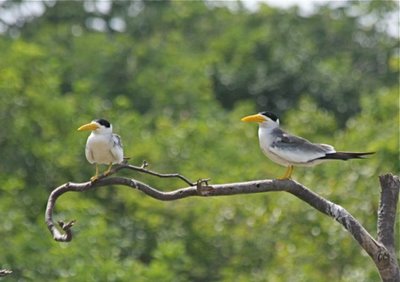
I just adore this bird. It reminds me of the crows in the old cartoon I loved, Hekyll and Jekyll.
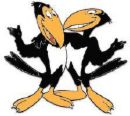

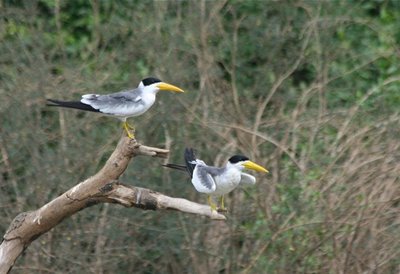 For a bird with such a wide range (throughout South America) it's amazing how little information is available on the large-billed tern's natural history. I would love to have the leisure and time to go find out something about its life.
For a bird with such a wide range (throughout South America) it's amazing how little information is available on the large-billed tern's natural history. I would love to have the leisure and time to go find out something about its life.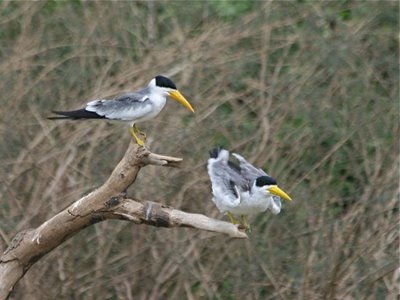
Labels: black skimmer, Hekyll and Jekyll, large-billed tern, southern lapwing






<< Home